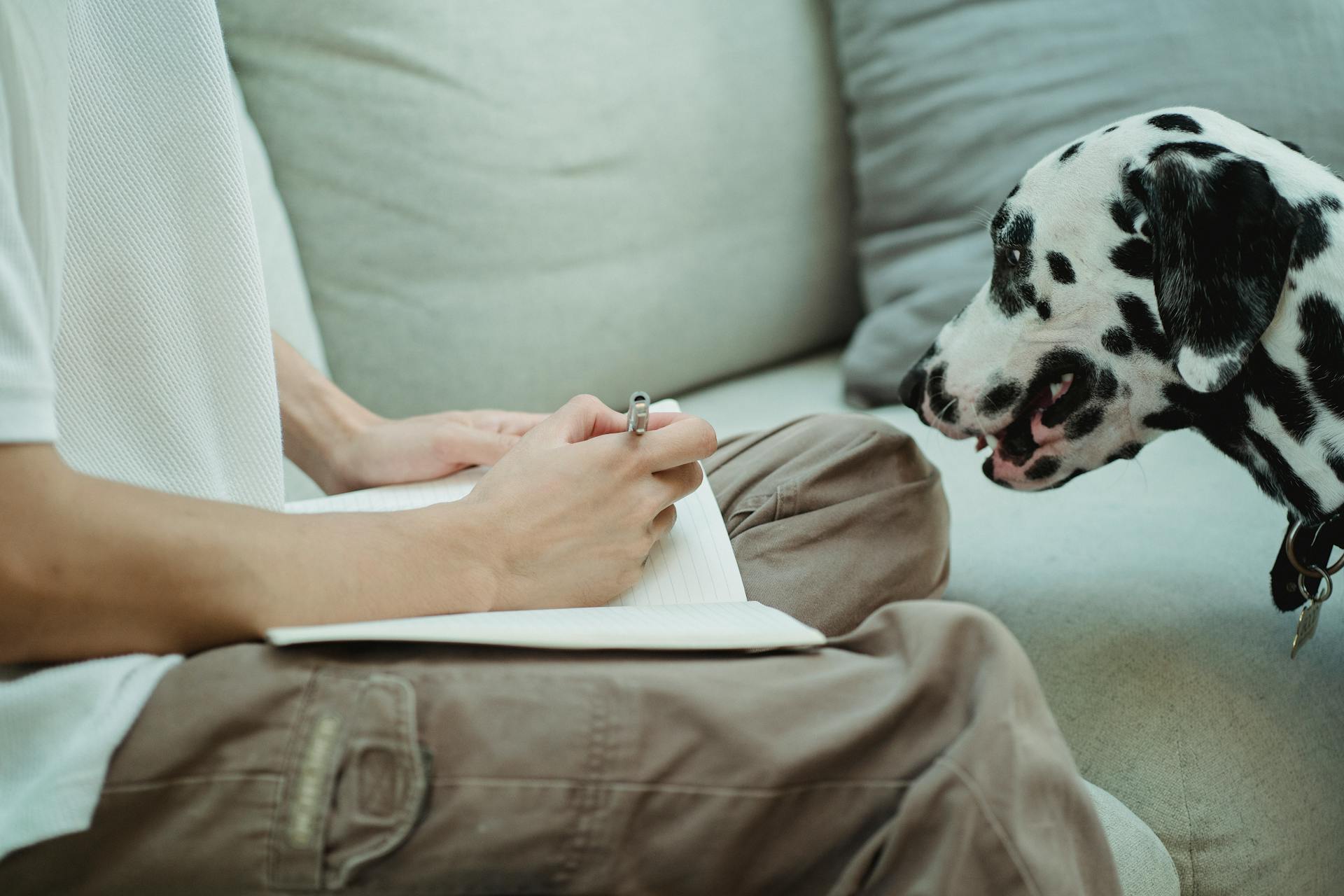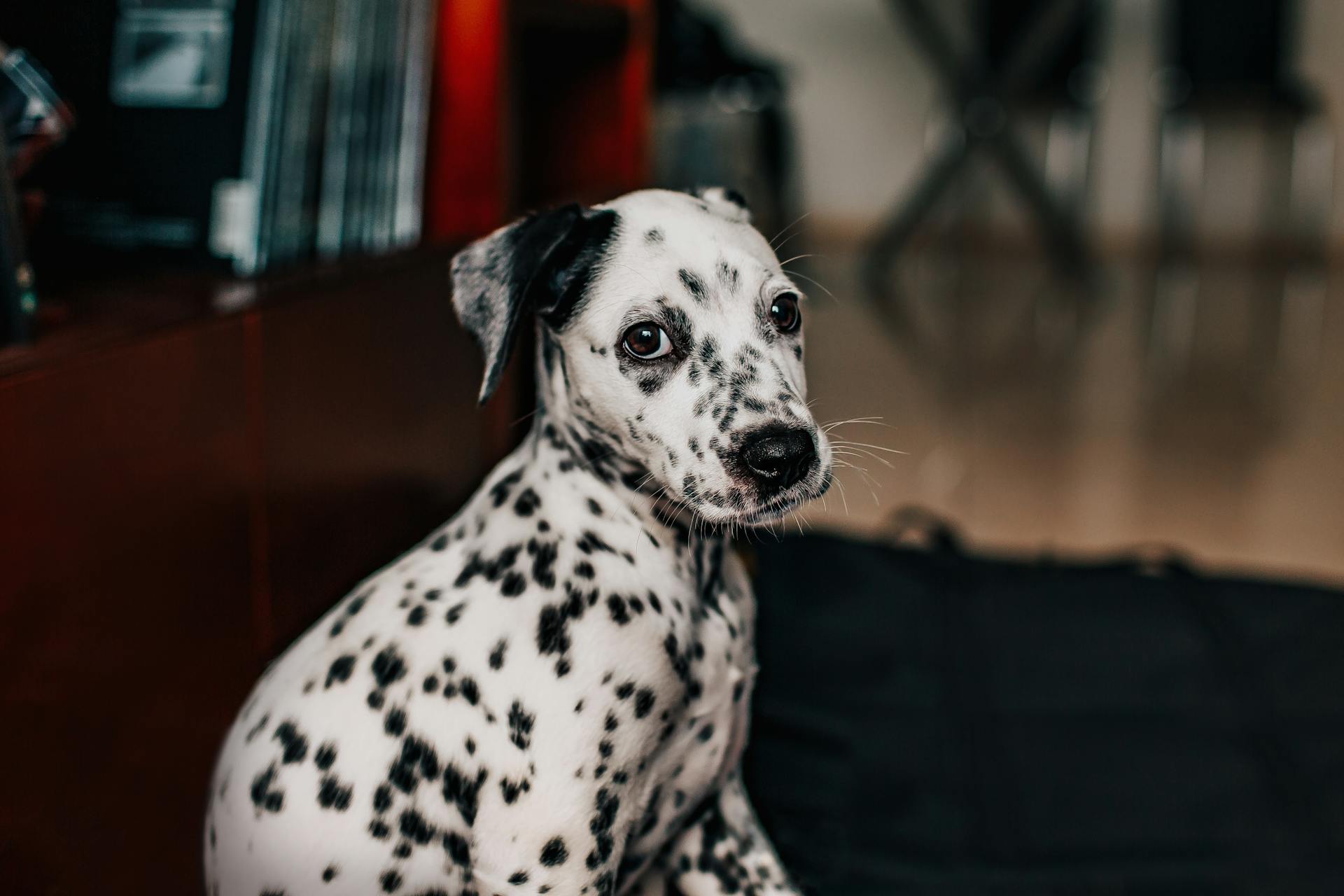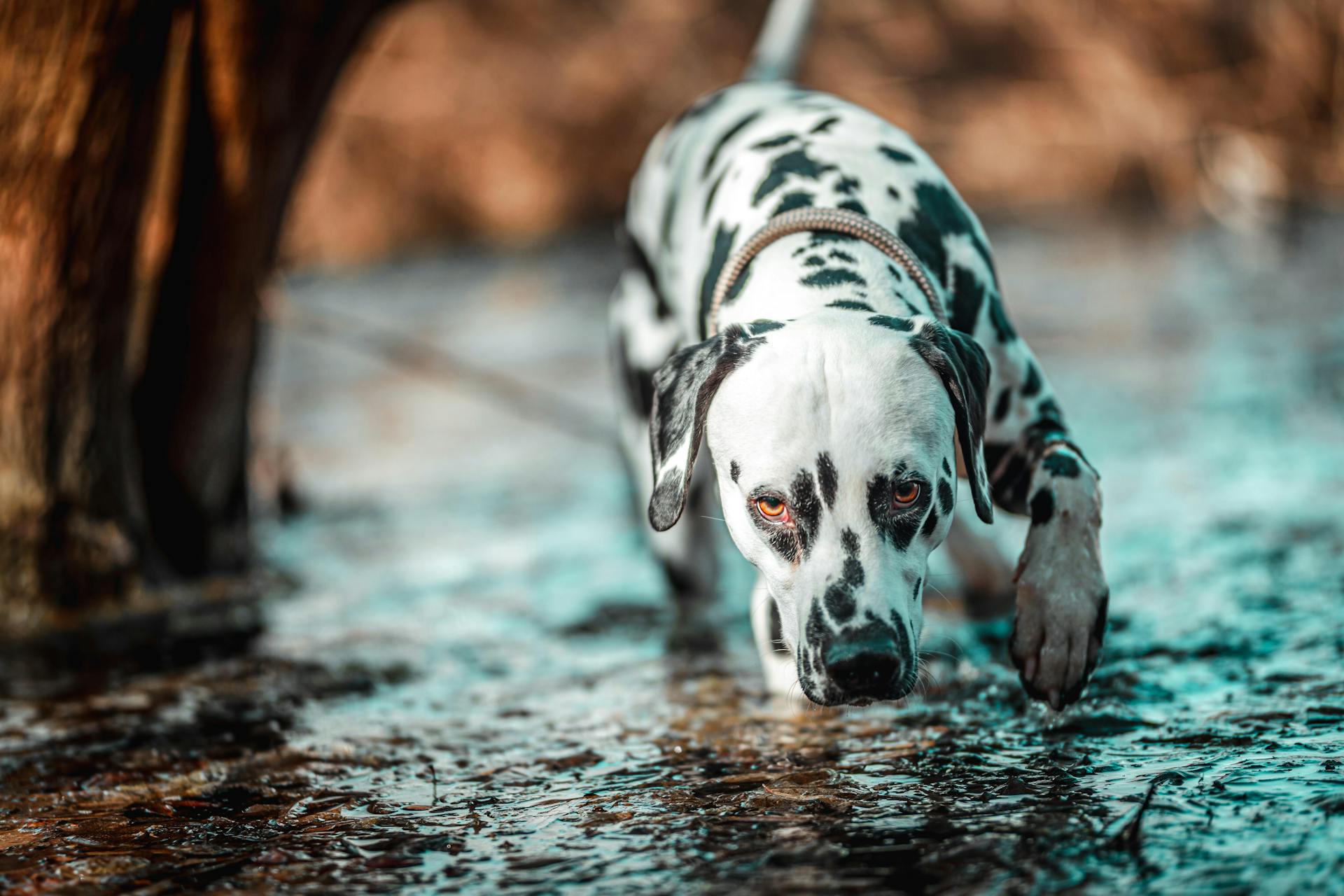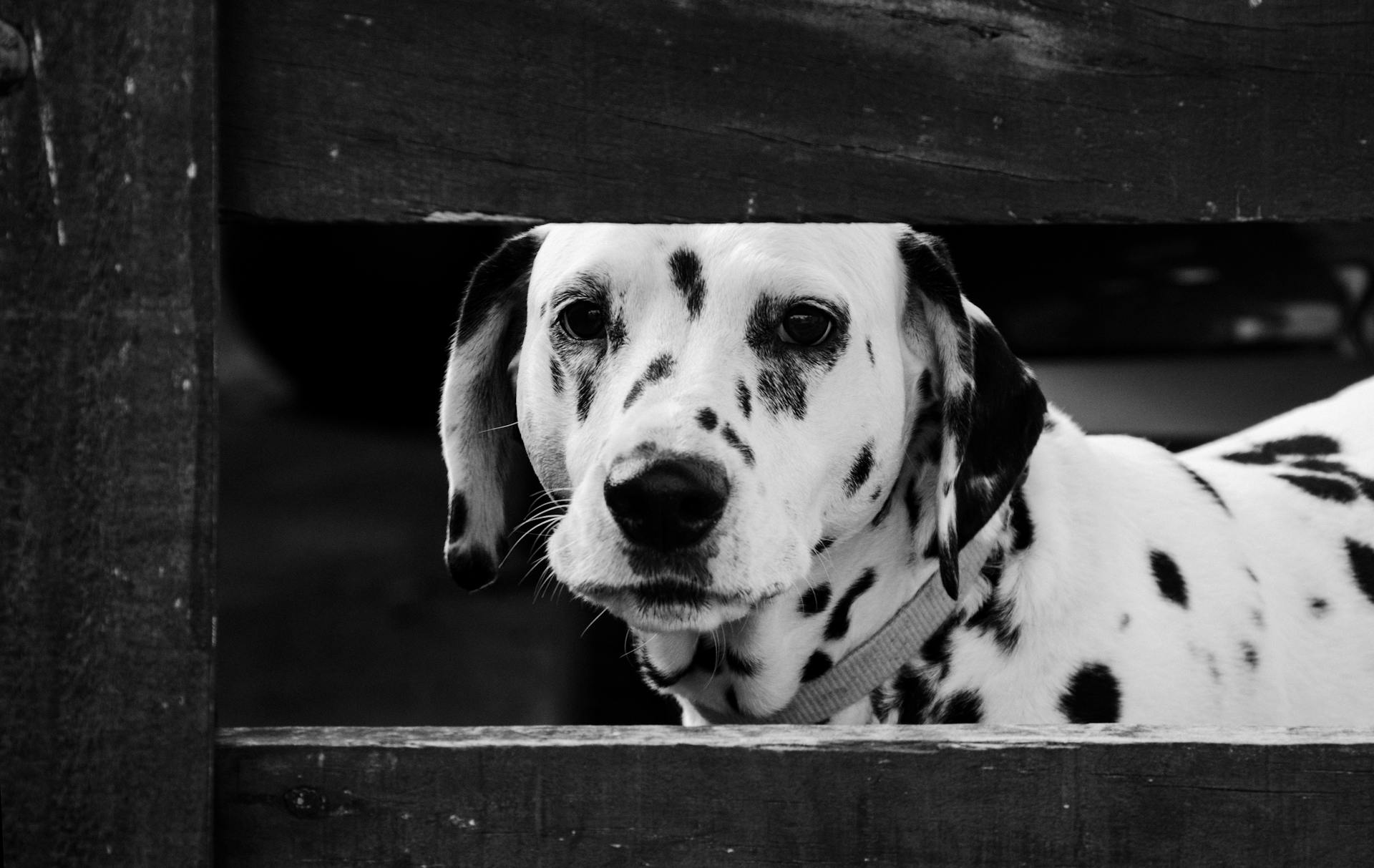
The Dalmatian dog is a breed with a rich history that dates back to 16th-century Europe. They originated in Dalmatia, a region in modern-day Croatia.
Their early role was as coach dogs, running alongside horse-drawn carriages to protect the horses and cargo. This unique job required them to be alert, energetic, and brave.
Dalmatians are known for their distinctive spotted coat, which is the result of a genetic variation that causes the production of dark pigment in patches. This unique appearance has made them a popular choice as mascots for fire departments and other organizations.
Their intelligence, loyalty, and energetic nature make them a great companion for active families or individuals.
History
The Dalmatian breed has a rich history that spans centuries. The first known written reference to a Dalmatian dog is from 1375.
The breed's early history is closely tied to the country of Dalmatia, located in the eastern Mediterranean region. In fact, the FCI recognized Croatia as its country of origin, citing several historical sources.
Readers also liked: Where Did Rottweilers Come from
The earliest illustrations of the breed have been found in Croatia, dating back to the 16th century. An altar painting in Veli Lošinj from 1600-1630 features a depiction of the breed.
The breed was mentioned and described in church chronicles from 1719 by Bishop Petar Bakić and then again by church chronicles of Andreas Keczkeméty in 1739. These early descriptions of the breed are found in the archives of the Archdiocese of Đakovo.
The breed's popularity grew during the Regency period, when it became a status symbol and those with decorative spotting were highly prized. The breed was also used to guard the stables at night.
The breed was developed and cultivated chiefly in England, where the first unofficial standard for the breed was introduced by Englishman Vero Shaw in 1882. The standard became official with the formation of the first Dalmatian Club in England in 1890.
Breed Characteristics
Dalmatians are known for their energetic and playful personalities, which make them a great fit for active families. They are natural athletes and love to run and play.
Their short coats require minimal grooming, but they do shed heavily, especially during shedding season. Regular brushing can help reduce the amount of loose hair.
Dalmatians are intelligent and trainable, but they can be stubborn at times, requiring patient and consistent training.
A different take: Dalmatian Movie Dog Names
Breed Appearance

Dalmatians are athletic animals with a slightly arched neck and deep chest.
Their symmetrical and elegant outline is a result of their long, nearly straight tail and medium length hanging ears.
Compact, rounded paws are a characteristic of the breed.
Dalmatians have an intelligent and inquisitive face that clearly expresses their friendly personality.
Their brown or blue eyes are set moderately well apart on their well-balanced muzzle.
Some Dalmatians may have eyes of two different colors, a trait that's not uncommon in the breed.
Their glossy, white coat with dark spots is instantly recognizable as a Dalmatian.
In addition to the classic black spotted and liver spotted colors, some Dalmatians may have larger patches of the darker color.
Consider reading: 101 Dalmatians Dog Names Girl
Dalmatian Temperament
Dalmatians are best known as carriage dogs and firedogs, and they are well suited to these jobs. They are people oriented, intelligent, playful, and loyal.
Dalmatians tend to be fairly adept at learning new tricks, making them a great choice for owners who enjoy training their pets. They do well with older children, although interactions with infants and toddlers should be carefully supervised.
Dalmatians have a natural affinity for horses, but if they're not properly socialized as puppies, they can develop aggressive and territorial behaviors towards other dogs, particularly dogs of the same sex.
Dalmatians are well known for their endurance and speed, but these traits also come with some challenges. If they don't get enough exercise, they can become restless, anxious, and destructive.
Notable Roles
Dalmatian dogs have been associated with firefighting for centuries. They were often used to run alongside horse-drawn carriages to clear a path and protect the horses from accidents.
Their strong instinct to follow and stay close to their pack, including the firefighters, made them ideal companions for this role. They were able to run alongside the horses and navigate through crowded streets with ease.
Dalmatians were also used as guard dogs to protect the horses and equipment from theft.
Frequently Asked Questions
Are Dalmatian dogs on Dalmatian Coast, Croatia?
Dalmatian dogs originated from the Dalmatia region in Croatia, but they are not typically found there today. Their history and origins are more closely tied to their roles as working dogs and companions.
Are Dalmatians from Egypt?
Dalmatians are not from Egypt, but their exact origins remain unclear. They have been depicted in ancient Egyptian art, suggesting a long history in the region.
What two dogs make a Dalmatian?
A Dalmatian is believed to be a cross between a pointer and a spotted Great Dane, with its ancestors originating from Croatia.
Featured Images: pexels.com


